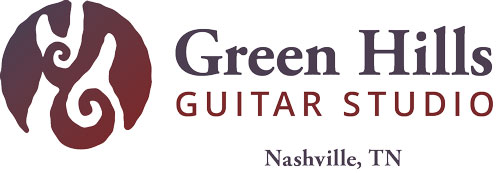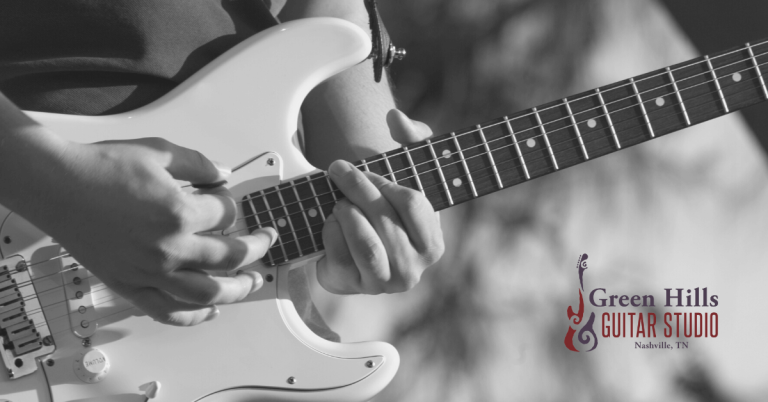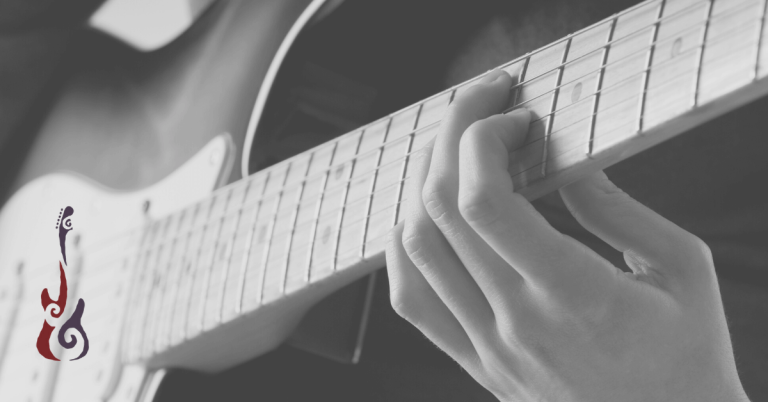The Influence of Blues on Modern Guitar Playing
Imagine a world without the blues. Picture your favorite guitar solos, those soulful, gut-wrenching bends and fiery riffs stripped of their emotional depth. It’s hard to imagine, isn’t it? The truth is that the blues has seeped into nearly every corner of modern guitar playing, shaping the sound and style of countless musicians.
Blues music began in the Deep South of the United States in the late 19th century. It was born from the African American experience and deeply rooted in their history and culture. It was a powerful form of expression, reflecting struggles, hopes, and resilience. Musicians like Robert Johnson and Muddy Waters crafted a raw and emotional sound, laying the foundation for what would become a universal musical language.
This blog will explore how blues music has shaped contemporary guitar techniques and styles. We’ll discuss important elements of blues guitar, see how it influenced various genres, and discover the legendary guitarists who have carried its torch.
Historical Background of Blues Music
Origins and Evolution
Blues music took its first steps in the late 19th century, emerging from the heart of the Mississippi Delta, a region known for its rich cultural heritage and fertile lands. The blues were born out of the African American experience, a musical expression of their daily lives, struggles, and hopes.
The earliest forms of blues were acoustic, characterized by raw emotion and poignant storytelling that resonated deeply with listeners. These songs were often performed in juke joints and on street corners, where the vibrant, soulful sounds captivated audiences.
Musicians like Robert Johnson, with his haunting melodies and profound lyrics, became legends whose influence would ripple through generations. Johnson’s mysterious life and mythical crossroads story added to the allure of his music, which was deeply rooted in the Delta blues tradition.
His songs, like “Cross Road Blues” and “Hellhound on My Trail,” reflected the pain and resilience of his people, cementing his legacy as one of the most influential blues musicians of all time.
Transition to Modern Blues
As the blues evolved, it moved from acoustic to electric, bringing a new energy and sound to the genre. This transformation began in the mid-20th century, primarily in urban centers like Chicago, where the Great Migration had brought many African Americans in search of better opportunities. In these bustling cities, blues musicians started to amplify their guitars to be heard over the noise of lively clubs and dance halls.
Artists like Muddy Waters and Howlin’ Wolf introduced amplified guitars and a more powerful, driving sound that captured the raw intensity of the blues. Muddy Waters, often referred to as the “Father of Modern Chicago Blues,” electrified his Delta roots, creating hits like “Hoochie Coochie Man” and “Mannish Boy” that became anthems of a new, urban blues style. Howlin’ Wolf’s deep, growling voice and commanding stage presence brought songs like “Smokestack Lightning” to life and further solidified the electric blues’ place in music history.
This evolution was crucial, laying the groundwork for the rock and roll explosion that was soon to come. The amplified sound and energetic performances of modern blues musicians influenced a new generation of artists, from Elvis Presley to the Rolling Stones, who would take these elements and create a global musical phenomenon.
Fundamental Elements of Blues Music
12-Bar Blues Progression
One of the most recognizable elements of blues music is the 12-bar blues progression. This chord progression, typically built on the I, IV, and V chords, is the backbone of countless blues songs and has been adopted across many genres.
Its simple yet versatile structure allows for endless creativity and improvisation, making it a fundamental building block for guitarists. Classic examples of songs using this progression include “Sweet Home Chicago” by Robert Johnson and “Hound Dog” by Big Mama Thornton.
Dominant 7th Chords
Dominant 7th chords are another fundamental element of blues music. These chords add tension and a distinctive bluesy sound to progressions, creating a sense of anticipation and resolution that is central to the genre’s emotional expression.
In a 12-bar blues progression, the I, IV, and V chords are often played as dominant 7ths (e.g., E7, A7, and B7 in the key of E). The unique sound of dominant 7th chords comes from the addition of the flattened 7th note to the major triad, which adds a slight dissonance that is pleasing to the ear. Learning to play and incorporate these chords is essential for any guitarist aiming to master blues music.
Classic songs like “Pride and Joy” by Stevie Ray Vaughan and “Crossroads” by Cream effectively use dominant 7th chords to drive their bluesy sound.
Blues Scales
Pentatonic and blues scales are essential tools in a guitarist’s toolkit. The minor pentatonic scale, which consists of five notes, forms the basis of many blues solos. The blues scale adds a distinctive flavor to solos and riffs with its minor third and flat fifth intervals, known as the “blue notes.” Mastering these scales is crucial for any guitarist looking to capture the essence of blues music. Practicing these scales over backing tracks can help players develop their improvisation skills.
Call and Response Technique
Blues music often features a call-and-response pattern, where a musical phrase (the “call”) is answered by a corresponding phrase (the “response”). This technique, rooted in African American work songs and spirituals, adds a conversational quality to the music and enhances the dynamic interplay between the guitar and vocals or between multiple instruments. Songs like “Mannish Boy” by Muddy Waters showcase this engaging musical dialogue.
Blues Guitar Techniques
Bending and Vibrato
String bending and vibrato are two techniques that define the expressive quality of blues guitar. Bending a string allows the guitarist to reach pitches between the standard frets, creating a vocal-like quality. Vibrato adds a slight variation in pitch to sustain notes, giving them a rich, emotional depth. Practicing these techniques slowly and focusing on control can enhance a guitarist’s expressiveness. B.B. King, known for his soulful vibrato, is a great example of these techniques in action.
Slide Guitar
Slide guitar involves using a slide, typically made of glass or metal, to glide along the strings. This technique produces a smooth, gliding sound synonymous with the blues. Players can use a slide to create seamless transitions between notes, adding a unique, vocal-like quality to their playing. Legendary guitarists like Duane Allman and Elmore James popularized this technique, showcasing its ability to convey deep emotion and soulful melodies. Songs like “Statesboro Blues” by The Allman Brothers Band and “Dust My Broom” by Elmore James are iconic examples.
Fingerpicking
Fingerpicking is another essential technique in blues guitar. In this technique, the guitarist plucks the strings directly with their fingers instead of using a pick, allowing for intricate patterns and a more intimate connection with the instrument. This approach is often used in Delta blues and other acoustic styles. Guitarists like Mississippi John Hurt have demonstrated the beauty and complexity of fingerpicking in their music. Practicing basic fingerpicking patterns can greatly enhance a guitarist’s versatility.
Influence on Modern Guitar Playing
Rock and Roll
Blues music laid the foundation for the birth of rock and roll. Pioneers like Chuck Berry and Elvis Presley drew heavily from blues influences, blending its raw energy with a new, rebellious spirit. The signature 12-bar blues progression and bluesy solos became staples in rock music, influencing countless artists. Songs like “Johnny B. Goode” by Chuck Berry and “Heartbreak Hotel” by Elvis Presley highlight the seamless integration of blues elements into rock and roll.
Contemporary Blues-Rock
Modern blues-rock artists like Gary Clark Jr. and Joe Bonamassa continue to push the boundaries of the genre. They blend traditional blues elements with contemporary sounds, creating a fresh and dynamic approach that resonates with new generations of guitarists and fans alike. Gary Clark Jr., for instance, infuses his music with rock, soul, and hip-hop influences. At the same time, Joe Bonamassa combines blues with hard rock elements, demonstrating the genre’s versatility and enduring appeal.
Blues Elements in Other Genres
Blues techniques and styles have permeated numerous other genres, including jazz, country, and metal. The improvisational nature of blues has influenced jazz guitarists like Wes Montgomery. At the same time, country music has adopted the storytelling aspect of blues lyrics, as seen in the works of Hank Williams. Even heavy metal guitarists, such as Zakk Wylde, incorporate bluesy bends and scales into their solos, demonstrating the genre’s far-reaching impact. This cross-genre influence underscores the blues’ fundamental role in shaping modern music.
Notable Modern Guitarists Influenced by Blues
- Eric Clapton: Eric Clapton, often referred to as “Slowhand,” has been a pivotal figure in bringing blues to mainstream audiences. His work with bands like Cream and his solo career has been deeply rooted in blues, showcasing his ability to blend traditional techniques with modern sensibilities.
- Robert Cray: Robert Cray has been a prominent figure in contemporary blues since the 1980s. His smooth vocal style and clean, expressive guitar playing have earned him multiple Grammy Awards and a lasting influence on the blues genre. Cray’s ability to blend blues with soul and rock elements has kept his music fresh and relevant.
- Stevie Ray Vaughan: Stevie Ray Vaughan’s explosive style and soulful playing brought a revival of blues music in the 1980s. His intense vibrato, powerful bends, and impeccable sense of rhythm made him a legend and an inspiration for aspiring guitarists.
- Robben Ford: Robben Ford is known for his sophisticated approach to blues guitar, blending elements of jazz, rock, and blues. His precise technique and innovative style have made him a highly respected figure in modern blues, influencing many guitarists across genres.
- Derek Trucks: Derek Trucks, a slide guitar master, has brought a unique and modern twist to the blues. His work with the Allman Brothers Band and the Tedeschi Trucks Band showcases his incredible skill and deep understanding of blues traditions, infused with jazz and world music elements.
- John Mayer: John Mayer has successfully merged blues with pop and rock elements, creating a unique sound that appeals to a wide audience. His technical prowess and deep understanding of blues traditions are evident in his music, making him one of the prominent modern torchbearers of the blues.
- Gary Clark Jr.: Gary Clark Jr. has breathed new life into the blues with his gritty, electrifying style. His music fuses blues with rock, soul, and even hip-hop, making him one of his generation’s most innovative blues guitarists. His powerful performances and deep respect for blues traditions have earned him a dedicated following.
Practical Applications for Guitarists
Learning Blues Standards
Guitarists should learn classic blues songs to truly understand the blues. Tracks like “Sweet Home Chicago” by Robert Johnson, “Cross Road Blues” by Robert Johnson, and “The Thrill is Gone” by B.B. King offer valuable insights into the genre’s techniques and musicality. To effectively learn these songs, break them down into sections, focus on mastering the techniques used, and listen closely to the original recordings to capture the nuances of the performances. Other great songs to learn include “Pride and Joy” by Stevie Ray Vaughan and “Red House” by Jimi Hendrix.
Incorporating Blues Techniques into Your Playing
Blues techniques can enhance a guitarist’s playing in any genre. Practicing bending, vibrato, and slide guitar can add emotional depth and expressiveness to solos and riffs.
- Start with simple bending exercises, gradually incorporating vibrato for added texture. One great exercise is to do a unison bend and continue to hold it. Check the intonation of each note after 5-10 seconds.
- Slide guitar practice can begin with basic open tunings and progress to more complex melodies. You don’t have to be Derek Trucks to enjoy this expressive style of guitar playing (even though we all wish we were).
- Fingerpicking exercises can include alternating bass patterns and more intricate fingerstyle arrangements. For stellar examples of blues fingerpicking, see Robert Johnson and Mississippi John Hurt.
Once you get some of these techniques under your fingers, integrate them into your guitar solos and experiment with them in different musical contexts, from rock and jazz to country and metal.
Blues Improvisation Tips
Blues is synonymous with improvisation. Guitarists should practice improvising over 12-bar blues progressions using blues scales. Start by familiarizing yourself with the minor pentatonic and blues scales in different positions on the fretboard.
Listen to classic blues solos to understand phrasing and dynamics. Begin your improvisation practice by creating simple phrases and gradually incorporating bends, slides, and vibrato. Use backing tracks to simulate playing with a band. This practice improves technical skills and fosters creativity and personal expression.
The Coda
The influence of blues music on modern guitar playing is profound and far-reaching. From its historical roots in the Mississippi Delta to its impact on contemporary genres, blues has shaped how guitarists approach their craft. Guitarists can dramatically improve their playing by practicing blues guitar techniques to add emotional depth to their playing.
Want To Learn How To Play Blues Guitar?
Are you interested in honing your guitar skills? At Green Hills Guitar Studio in Nashville, TN, we offer personalized blues guitar lessons for all skill levels. Whether you’re just starting or looking to refine your blues techniques, our experienced instructors are here to help you reach your musical goals. Contact us today to schedule your first lesson and dive into the world of blues guitar.






